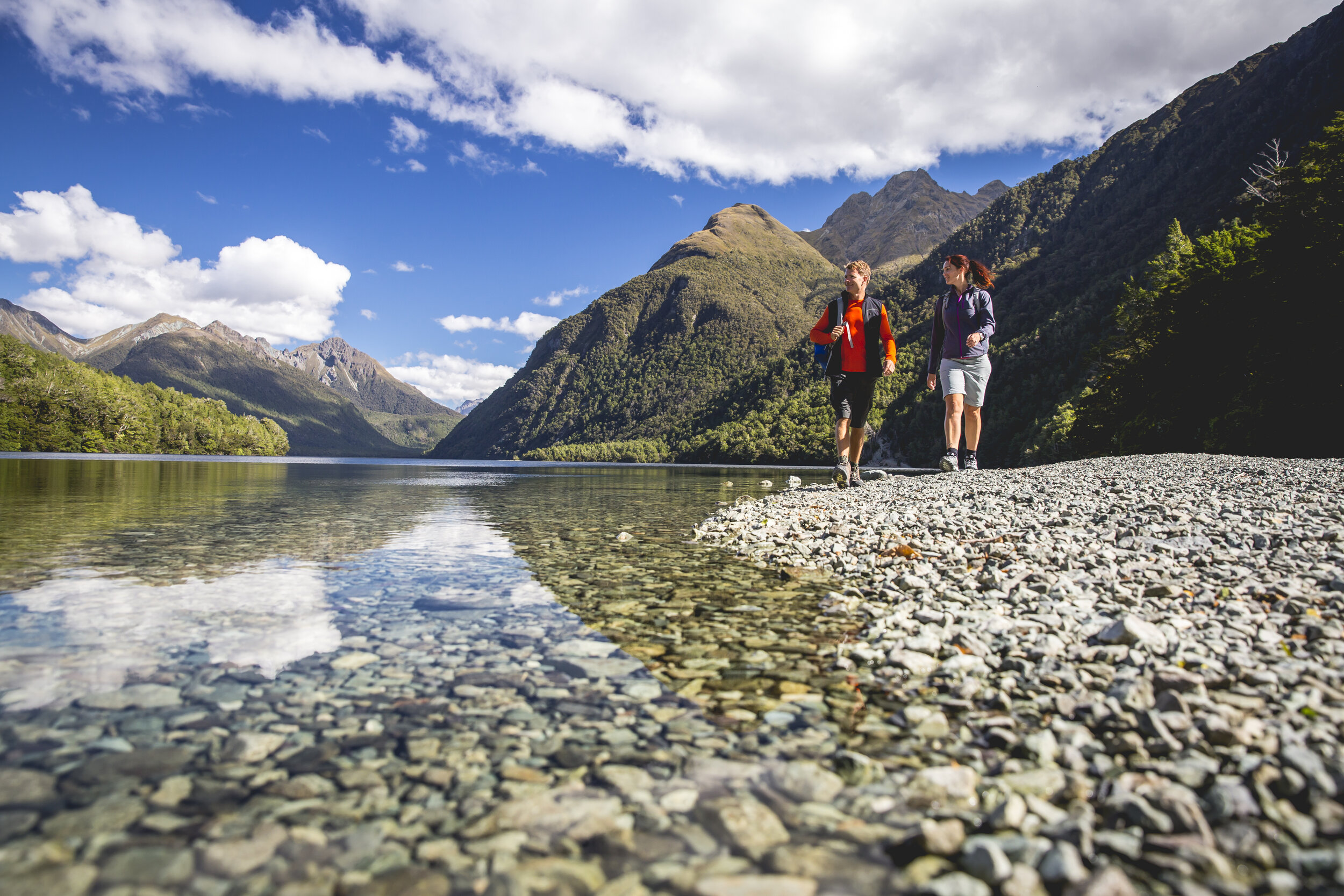Fiordland National Park
The attraction of walking in the Fiordland National Park
Few places serve as a humbling reminder of the true power, dynamism and force of nature. The Fiordland National Park and its dramatic fjords, stunning waterfalls and formidable cliffs draped with rainforest undoubtedly serve this purpose. Even the well-seasoned traveller would find it hard to feign unaffectedness to the sheer scale of the place. It’s little wonder as to why the Fiordland National Park has attained UNESCO World Heritage status.
The astounding fiords visible today preserve a remarkable 500,000 year long geological history which saw the land carved and reshaped through glacial action. During the last Glacial Maximum, massive glaciers eroded deep valleys into the earth. When the glaciers melted, the valleys were flooded and were transformed into huge fiords and lakes.
The Fiordland National Park lies in the Te Wāhipounamu World Heritage Area on the south-west of the Southern Island. This area includes the world-famous Milford Sound and Doubtful Sound. Te Anau is the closest town from which many walks can be accessed via transportation means.
For a truly immersive experience in this incredible natural landscape, there are several high-standard walks including the Milford Track, the Routeburn Track and the Kepler Track. The Milford Track is a Department of Conservation Great Walk and is certainly one of the most rewarding. The four-day walk starts from Lake Te Anau and finishes at the magnificent Milford Sound. It is a well-constructed track which guides walkers through two glacial valleys, separated by the MacKinnon Pass.
The Kepler Track, opened more recently in 1988, traces the edge of Lake Te Anau and showcases Fiordland’s beech forests, astounding geological outcrops, caves and tussock ridge lines. The Routeburn Track covers sections of the Fiordland National Park and the Mount Aspiring National Park. (Please refer to our description of the Mount Aspiring National Park to obtain details of the marvellous Routeburn Track).
The best time to visit is typically late October through to mid April, although it should be noted that the region can experience heavy rainfall all year-round. Rainfall is to be expected as it provides crucial replenishment to this water-based system. This also allows visitors the chance to marvel at the landscape in peak productivity, with gushing waterfalls and thriving forestry.
For a seamless experience, organisation is key during peak season – prior booking of overnight huts and transportation (to and from the track) is essential. During winter and spring the area can be prone to avalanches, so attention to weather forecasts is strongly advised.
Interested in walking in the Fiordland National Park?
One of the best multi-day walks in the Fiordland National Park is the Milford Track. Click the button below for a description of the Milford Track. We can help you to plan and book your Fiordland National Park adventure (guided or self-guided). We can also assist you with transport, accommodation and travel insurance.
The Milford Track is just one of many Fiordland National Park walks we can tell you about, and help you to plan and book. Click below to learn more.



